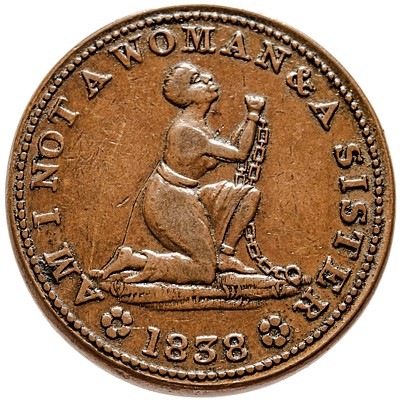1943 Frank Lloyd Wright Signed + Inscribed: FRANK LLOYD WRIGHT: An Autobiography
Lot 234
Categories
Estimate:
$2,000 - $2,400
Absentee vs Live bid
Two ways to bid:
- Leave a max absentee bid and the platform will bid on your behalf up to your maximum bid during the live auction.
- Bid live during the auction and your bids will be submitted real-time to the auctioneer.
Bid Increments
| Price | Bid Increment |
|---|---|
| $0 | $10 |
| $200 | $20 |
| $300 | $25 |
| $500 | $50 |
| $1,000 | $100 |
| $2,000 | $200 |
| $3,000 | $250 |
| $5,000 | $500 |
| $10,000 | $1,000 |
| $20,000 | $2,000 |
| $30,000 | $2,500 |
| $50,000 | $5,000 |
| $100,000 | $10,000 |
| $200,000 | $20,000 |
| $300,000 | $25,000 |
| $500,000 | $50,000 |
About Auction
By Early American History Auctions
Feb 27, 2021
Set Reminder
2021-02-27 12:00:00
2021-02-27 12:00:00
America/New_York
Bidsquare
Bidsquare : Black History & Slavery, Historic Autographs, Colonial America & Weapons
https://www.bidsquare.com/auctions/early-american-history-auctions/black-history-slavery-historic-autographs-colonial-america-weapons-6434
318 Lots of Rare, Historic Autographs, Americana, Civil War Era, George Washington, Abraham Lincoln, Slavery & Black History, Revolutionary War Era, Colonial America, Federal Period, War of 1812, Colonial Currency, Historic Early American Guns & more... Early American History Auctions auctions@earlyamerican.com
318 Lots of Rare, Historic Autographs, Americana, Civil War Era, George Washington, Abraham Lincoln, Slavery & Black History, Revolutionary War Era, Colonial America, Federal Period, War of 1812, Colonial Currency, Historic Early American Guns & more... Early American History Auctions auctions@earlyamerican.com
- Lot Description
Autographs
"Frank Lloyd Wright: An Autobiography" Signed-Inscribed
FRANK LLOYD WRIGHT (1867-1959). Famous American Architect, often considered the greatest U.S. Architect of all time, his greatest legacy is "Organic Architecture," or the idea that buildings harmonize both with their inhabitants and with their environment.
1943-Dated, "Frank Lloyd Wright: An Autobiography," Book Signed "Frank Lloyd Wright," measuring 9.5" x 6.25", Choice Very Fine. The Inscription, written in ink on the title page reads: "To D. Jacob Davies from Frank Lloyd Wright. Taleisin. Sept. '52. Greetings!" Faber & Faber Limited, London, the book contains 486 pages, and has a subtitle: "Five Books in One Volume." There are 16 black and white photo plates in the book, front and back, bearing 76 pictures of various Wright-designed homes. There is light wear on the corners and edges of the covers, and very light toning to flyleaf and outside page edges. Overall, this wonderful book, its "Frank Lloyd Wright" autograph and inscription are in excellent condition.
Frank Lloyd Wright (1867-1959) was born in Richland Center, Wisconsin, where one of his early building designs still stands. After studying engineering briefly at the University of Wisconsin, he worked for the firm of Dankmar Adler (1844-1900) and Louis Sullivan in Chicago, before opening his own practice there in 1893.
Wright became the chief practitioner of the Prairie School, building about 50 Prairie houses from 1900 to 1910. Early nonresidential buildings include the forward-looking Larkin Building in Buffalo, N.Y. (1904; destroyed 1950), and Unity Temple in Oak Park, Ill. (1906). In 1911 he began work on his own house, Taliesin, near Spring Green, WI. The lavish Imperial Hotel in Tokyo (1915-22, dismantled 1967) was significant for its revolutionary floating cantilever construction, which made it one of the only large buildings to withstand the earthquake of 1923.
In the 1930s he designed his low-cost Usonian houses, but his most admired house, Fallingwater, in Bear Run, Pa. (1936), is an extravagant country retreat cantilevered over a waterfall. His Johnson Wax Building (1936-39), an example of humane workplace design, touched off an avalanche of major commissions.
Of particular note is the Guggenheim Museum (1956-59), which has no separate floor levels but instead uses a spiral ramp, realizing Wright's ideal of a continuous space. Throughout his career he retained the use of ornamental detail, earthy colours, and rich textural effects. His sensitive use of materials helped to control and perfect his dynamic expression of space, which opened a new era in American architecture.
Often considered the greatest U.S. architect of all time, his greatest legacy is "organic architecture," or the idea that buildings harmonize both with their inhabitants and with their environment.
Our Auction Contents:
Black History & Slavery: (Lots 1 - 63)
Abraham Lincoln Related: (Lots 64 - 74)
Historic Autographs: (Lots 75 - 235)
Colonial America: (Lots 236 - 261)
Revolutionary War: (Lots 262 - 304)
George Washington Related: (Lots 305 - 306)
Early American Guns & Weapons: (Lots 307 - 318) - Shipping Info
-
Early American provides in-house worldwide shipping. Please contact us directly if you have questions about your specific shipping requirements.
-
- Buyer's Premium



 EUR
EUR CAD
CAD AUD
AUD GBP
GBP MXN
MXN HKD
HKD CNY
CNY MYR
MYR SEK
SEK SGD
SGD CHF
CHF THB
THB
















